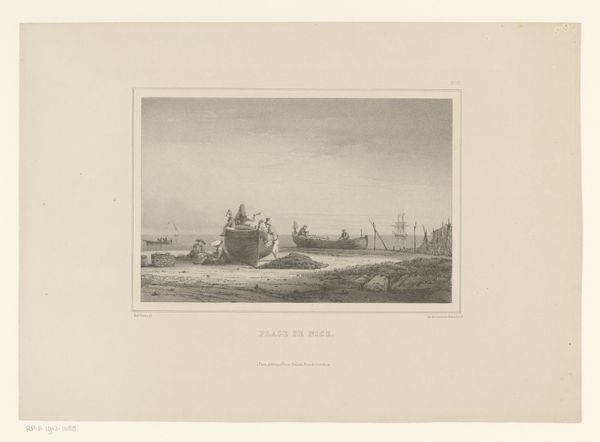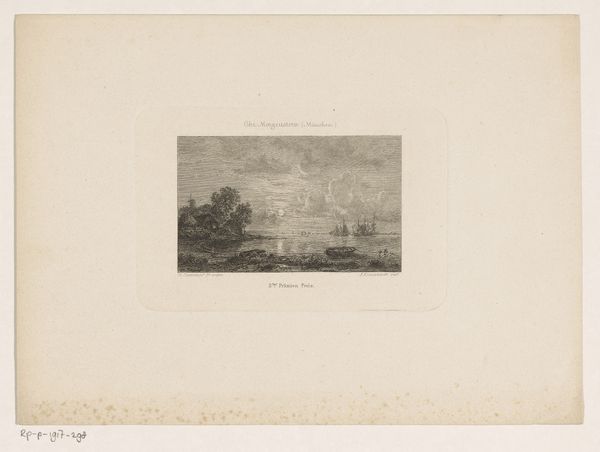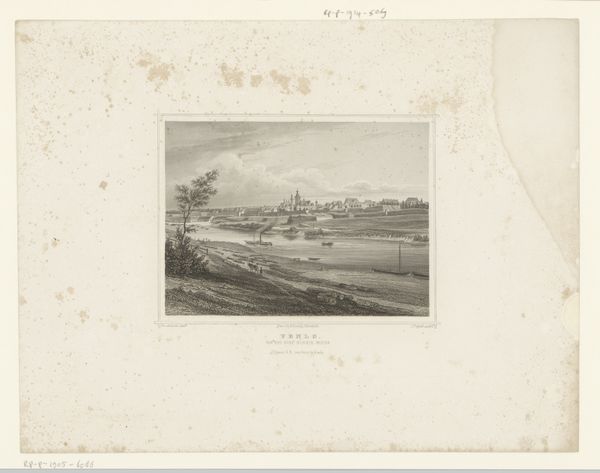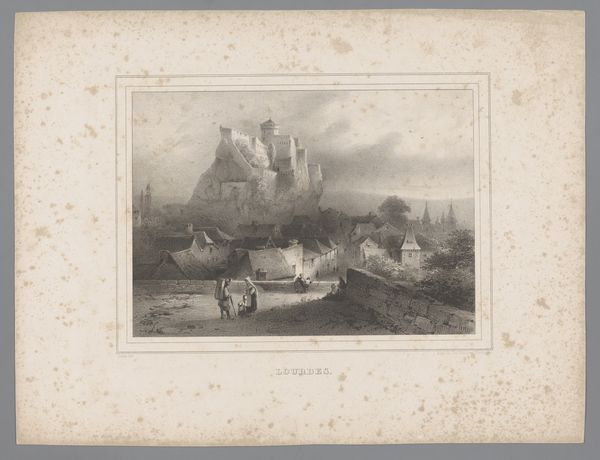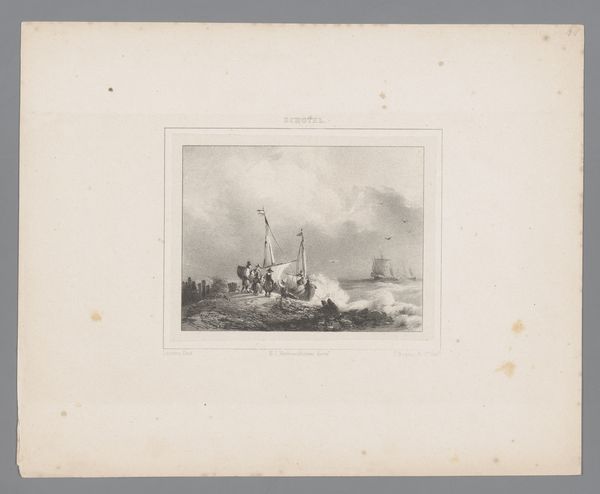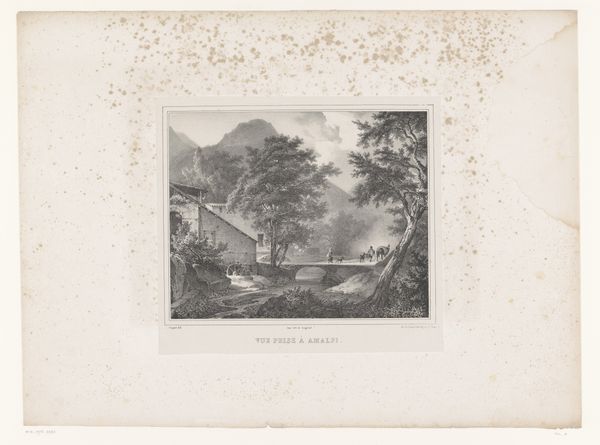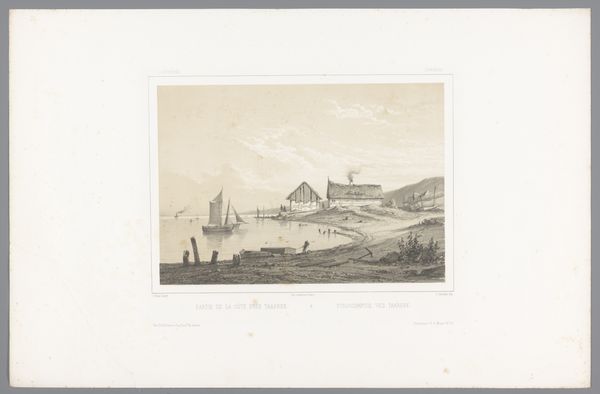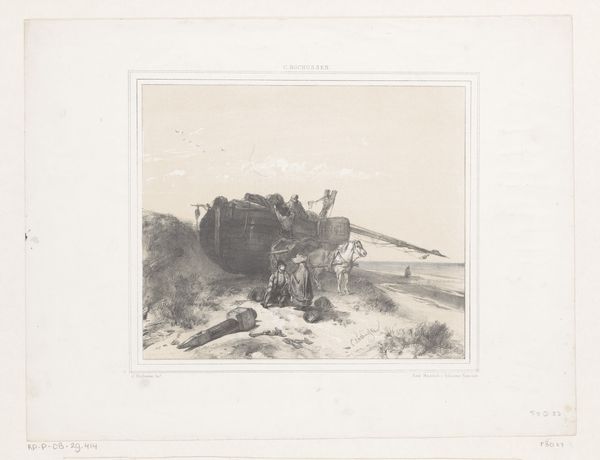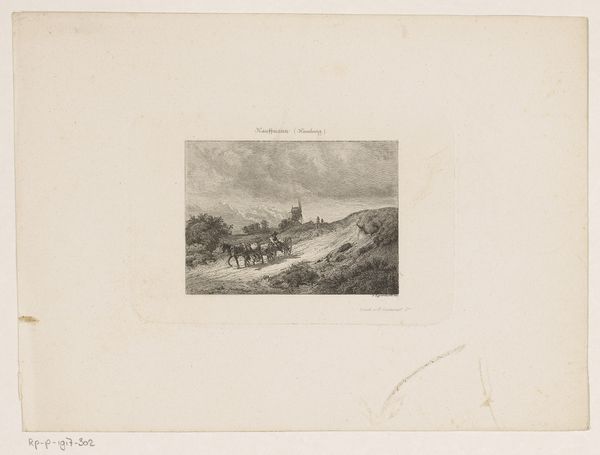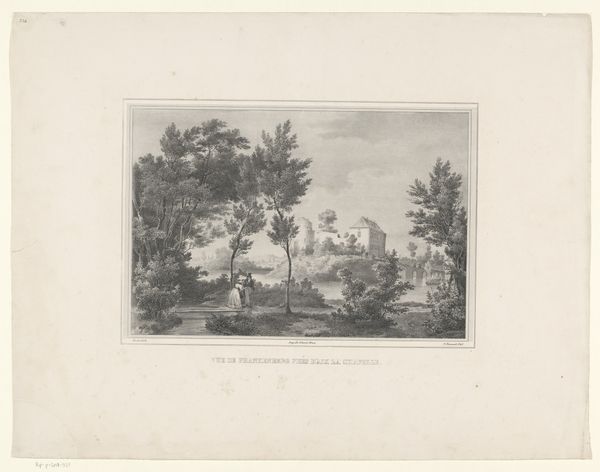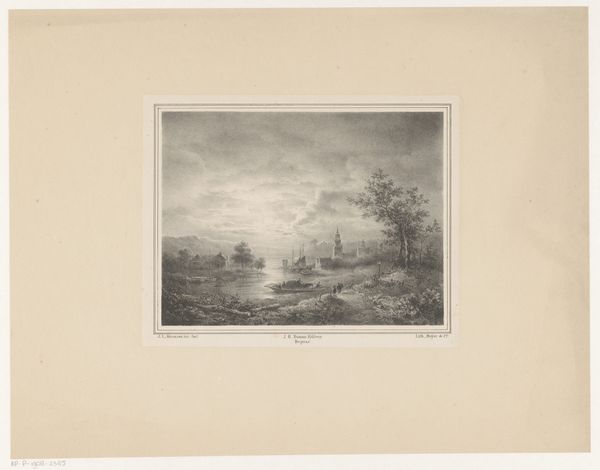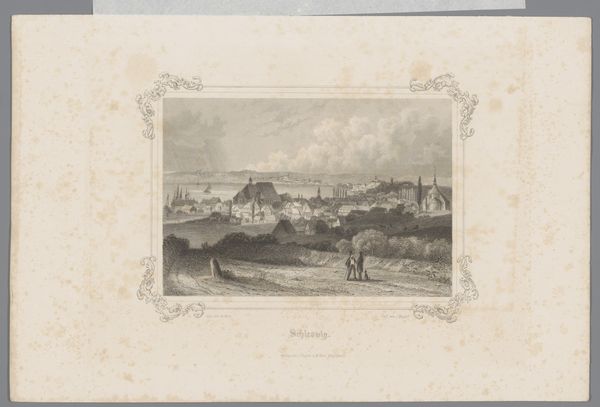
# print
#
landscape
#
romanticism
#
cityscape
#
watercolor
Dimensions: height 243 mm, width 318 mm
Copyright: Rijks Museum: Open Domain
Curator: Looking at this cityscape by Théodore Fourmois, painted in 1833, I'm struck by the artist's eye for detail despite the subdued palette. This is "View of Antwerp and the Flemish Head." What are your initial thoughts? Editor: It evokes a sense of melancholy for me. The soft, gray tones almost wash out the vibrancy you might expect from a port city, lending the piece a somewhat solemn feel. The looming skyline reminds me of similar landscapes I have seen portraying cities as seen from afar. Curator: The print uses watercolor. It's definitely within the Romanticism style; think of its focus on emotion and individualism. Here we see not just a place, but an individual's emotional response to it, rendered through light and shadow. Consider, too, the date of this work: just three years after the Belgian Revolution. Antwerp bore the brunt of much of the conflict in this particular area. Editor: That's a potent point. This isn't just a picturesque scene; it's a document. Antwerp as a port city was the site of constant struggle to establish autonomy and sovereignty. Perhaps the soft focus and subdued colors subtly allude to the wounds of war still fresh. Curator: Precisely. The symbolism within this work is multifaceted. Antwerp itself would function as the subject for the city to project strength despite these injuries, which explains the artist taking special care of the image. I suspect viewers at the time may have responded differently than audiences today. It functioned for many as both a civic emblem and memorial to what happened. Editor: Absolutely. I am fascinated by how we perceive the city in 2024. Fourmois offers a perspective filtered through history. How interesting is that as this piece has served multiple purposes throughout time. It invites viewers like us to reflect not only on the scene but also on the evolving narrative of places and the people they house. Curator: A beautiful way to put it. It seems we have uncovered not just a visual document, but also a mirror reflecting the multifaceted narratives embedded within art and urban environments. Editor: Yes. It's a powerful reminder that art speaks through many eras.
Comments
No comments
Be the first to comment and join the conversation on the ultimate creative platform.
